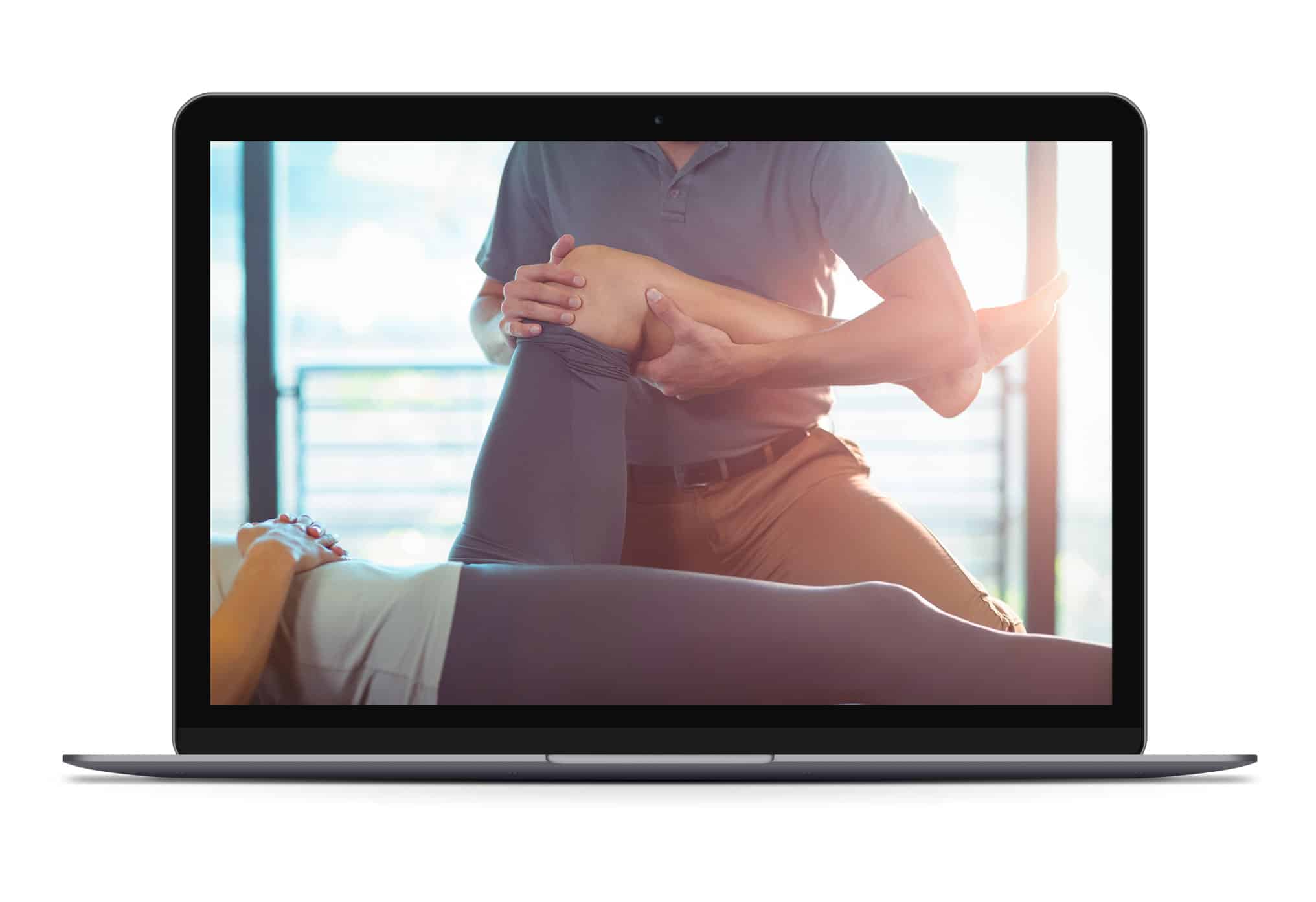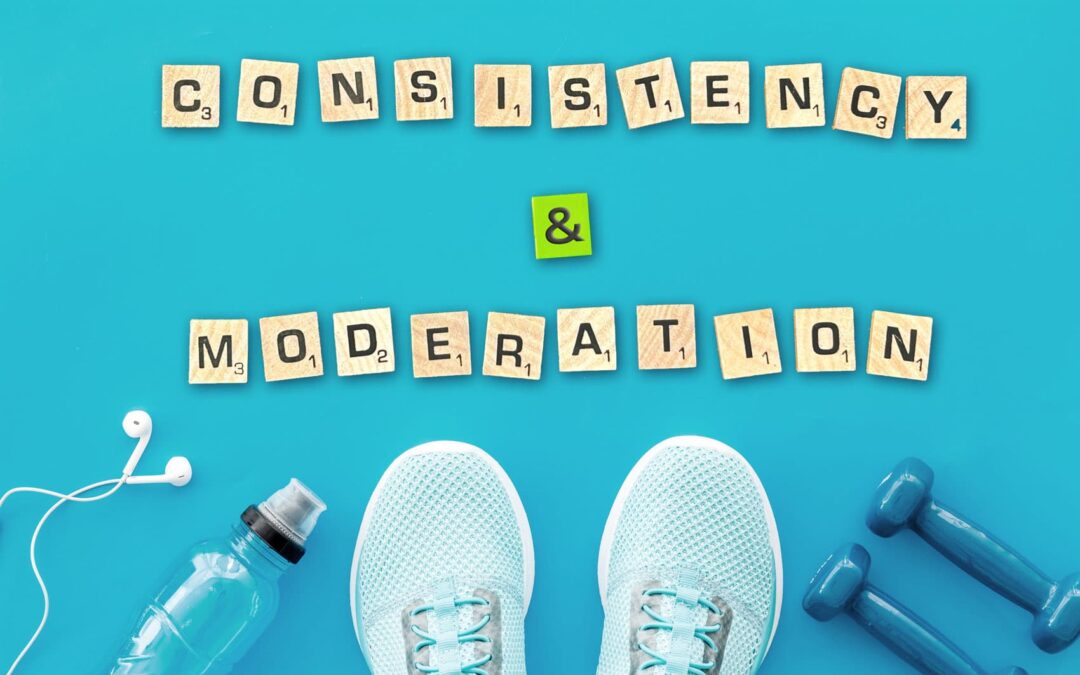
Running Training: A Holistic, Evidence-Infused Philosophy
by Chris Johnson PT
Consistency and Moderation Reign Supreme.
That’s the bedrock of my training theme.
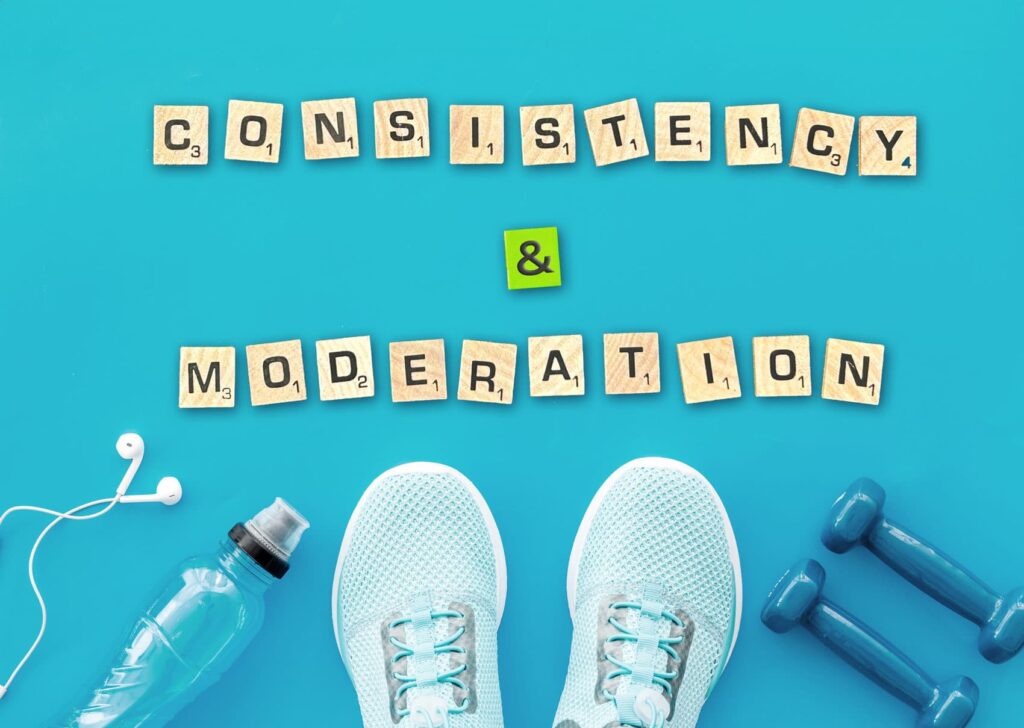
Whether recovering from an injury or new to running, the initial goal is to have you run on non-consecutive days.
It’s also important you stay on top of wellness factors like sleep, which means stop scrolling – it’s time to hit the hay.
As you start stringing workouts together, your cardiovascular system will rapidly adapt.
However, respect that your musculoskeletal system will not adapt quite as fast.
I already sound like a broken record, though the cornerstone of success as an endurance athlete is consistency of training, so protect it at all costs.
Because if sidelined from training, the adaptations you’ve worked so hard for will go to pot.
Once you’ve proven tolerance to several weeks of measured training, it’s time to consider adding some intensity.
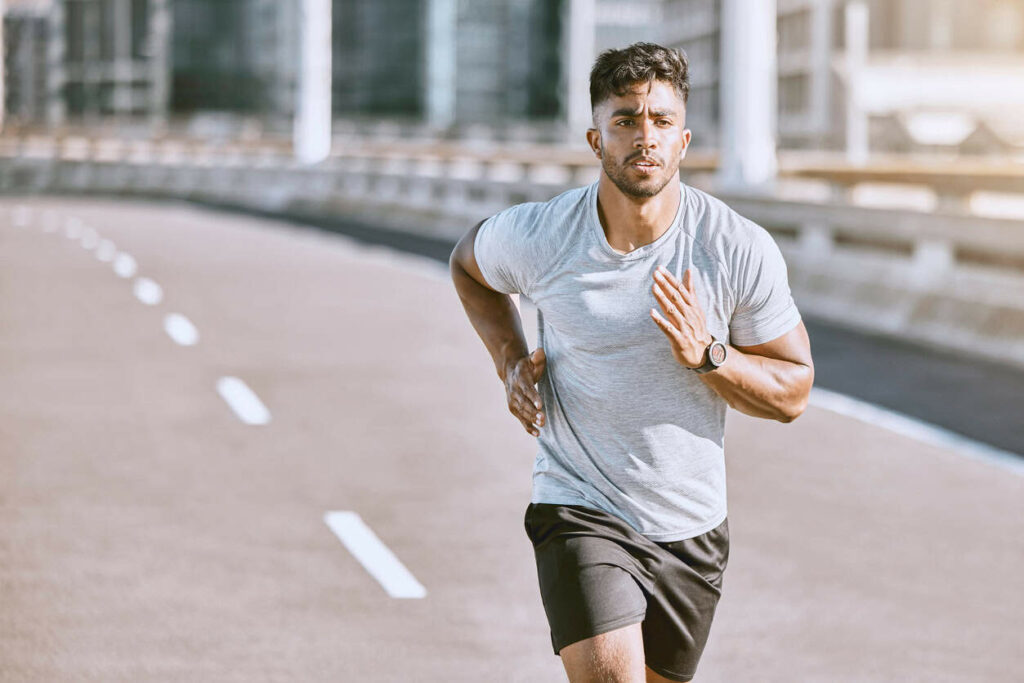
To run faster, one must hit the ground harder so do so sensibly.
Thanks to Dr. Dan Cleather, I often refer to these as “hot sessions.”
They demand you to be fresh otherwise, be prepared to learn your lesson.
10-15s measured strides are a sensible place to start.
These involve running fast and relaxed, and it’s OK if you let out a fart.
Tempo and interval runs also qualify as hot sessions, and initially should be performed on level ground.
These can also be done on a track if you like running round and round.
Of course, the long run is important and something that runners fret about.
If you’re looking to build durability, you can perform it on a rolling to hilly route.
An acronym I often share with athletes is F.D.D.I., which stands for frequency, duration, density, and intensity.
It serves as a great framework to reduce programming complexity.
Most of you understand what frequency, duration, and intensity mean.
Density is how much time we afford between.
If you look at my programming, I often advise runners to afford a minimum of 6hrs (if doing “two a days”) but ideally 24hrs b/w runs.
This ensures that bone regains its mechanosensitivity.
In effect, it safeguards against bone stress injuries.
Any runner who has sustained one can attest that they’re no fun.
Because, as runners, we’re stripped of the very thing we love to do which is run.
Now, back to training.
The ultimate goal is to help you build, maintain, and connect running qualities such as speed, the heart’s ability to pump blood or time on feet.
To build a running quality, challenge the runner with a session designed to create the appropriate stimulus once a week.
Once established, ensure you don’t lose it by checking that box every two-three weeks.
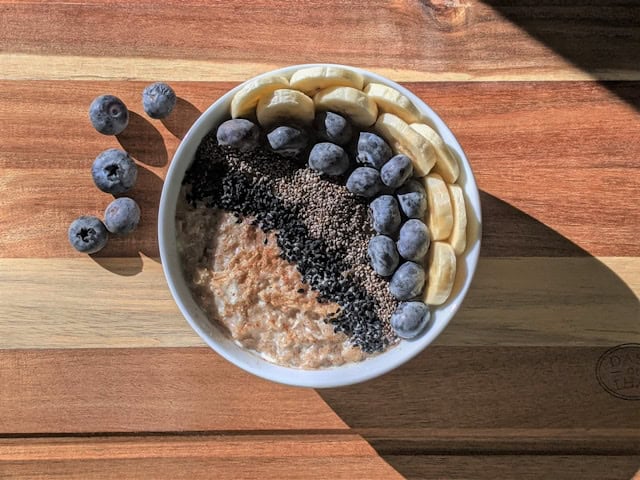
And, of course, it’s critical to ensure you’re fueling appropriately to meet your training needs.
Based on current research, we’re starting to appreciate carbohydrates reign supreme.
Asker Jeukendrup has created some excellent resources if you’re looking to determine appropriate carb intake.
Here is a link to one infographic in particular that was great.
If there’s one thing a runner should do beyond running, it’s likely resistance training.
Lifting can be simple, and I’ll try to ensure this doesn’t come across as mansplaining.

Considering the seminal papers by Dorn et al. and Hamner et al., we should focus on building strength and capacity in the calves, quads, hammies, and hips.
To help accomplish this, we can pick a compound exercise such as a squat and deadlift.
Working in heavy farmer marches also does wonders and is often the missing ingredient in many strength programs.
Challenging runners with a power or plyometric-based activity is also essential since running is about elasticity.
These also take on greater importance when a runner is recovering from a bone stress injury.
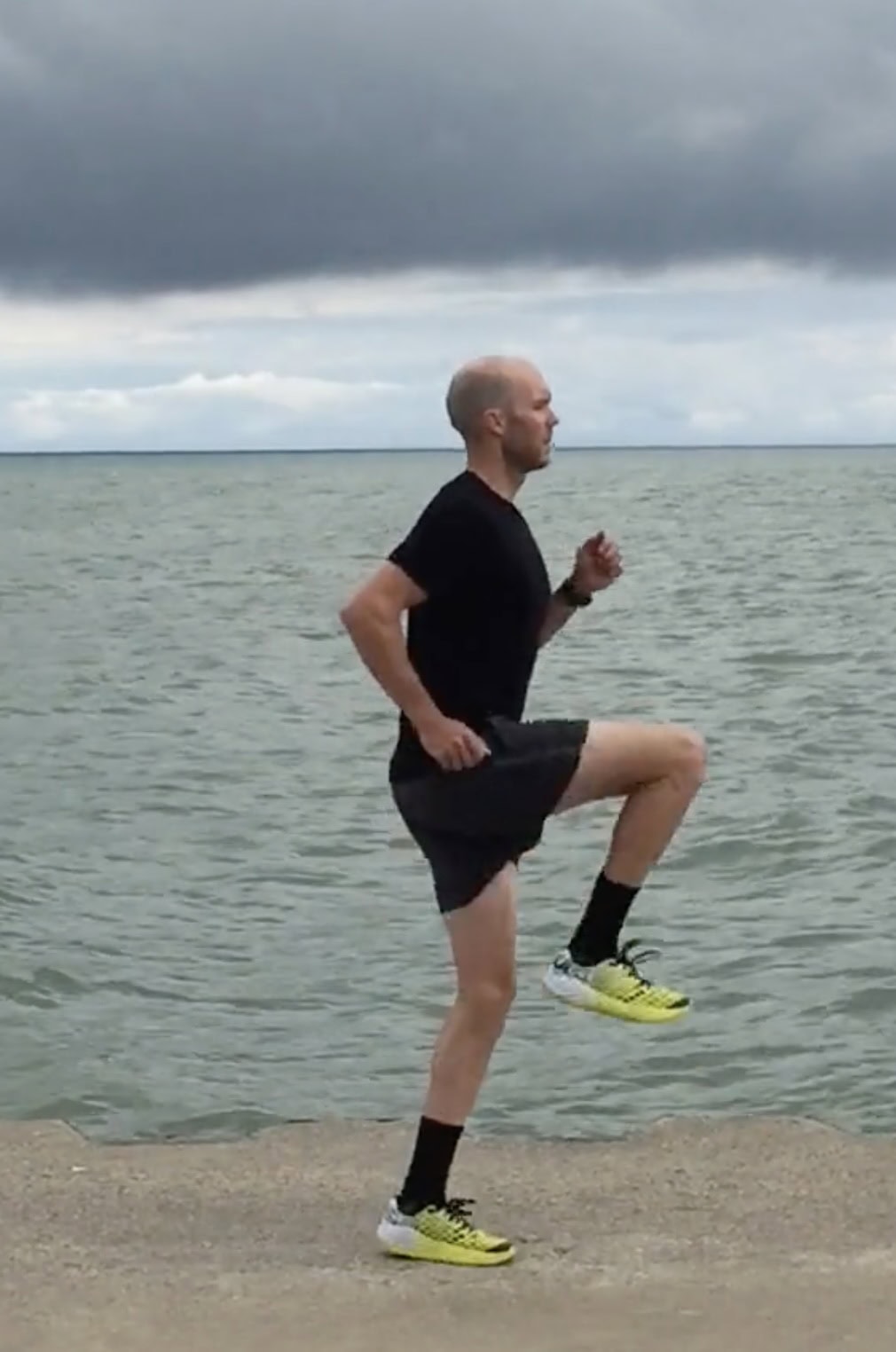
Jumping activities are also crucial for bone health and critical for younger runners, given the bone growth “window of opportunity.”
Thanks to research done in racquet sport athletes the greatest benefits seem to happen before the end puberty.
However, don’t get carried away with extensive training in this form, and make sure you understand the runner’s past medical history.
The reason it’s crucial is that in addressing bone stress injury, we aim for loading impulsivity.
Power and plyometric training are also safe and vital as we age to stave off losing reactive strength.
All you need to do is observe a geriathlete runner to appreciate this manifests as a reduction in stride length.
Regarding specific exercises, pogo jumps, broad jumps, and simple skipping variations are often the most practical drills.
They’re also great because they’ll challenge your rhythm and timing skills.
Lastly, don’t be afraid to incorporate localized loading such as calf raises and seated knee extensions.
If you’re wondering what angle to focus on, it’s essential to understand the relationship between muscle length and tension.
For example, if we’re talking about the calf muscle complex, aim for higher loads and work into 15-20 degrees of ankle dorsiflexion.
And please, if you’re dealing with running-related pain or injury, just say no to pills and corticosteroid injections.
Localized training is also essential, especially if one has a history of lower limb tendinopathy, as it creates a situation where the tissues have no place to hide.
However, this places a greater responsibility on the clinician-coach to get the sets and reps right, so make sure you carefully decide.
Incorporating an upper-body push or pull is an excellent way to round out the program.
These can be performed horizontally or vertically, and I’m confident you’ll find many options through a search on Instagram.

So, to wrap things up, consider the following..
Most of your training should involve running slow sprinkled with some fast.
And remember, you’ll never survive if you’re always on the gas.
Sometimes, run solo, though I also suggest running with a group.
And always be wary of any coach who makes you run til you puke.
In Steve Magness’s wise words, the ultimate aim of training is to “disturb or embarrass your system.”
Consider using an autoregulatory approach because when it comes to your mind-body it’s important you listen.
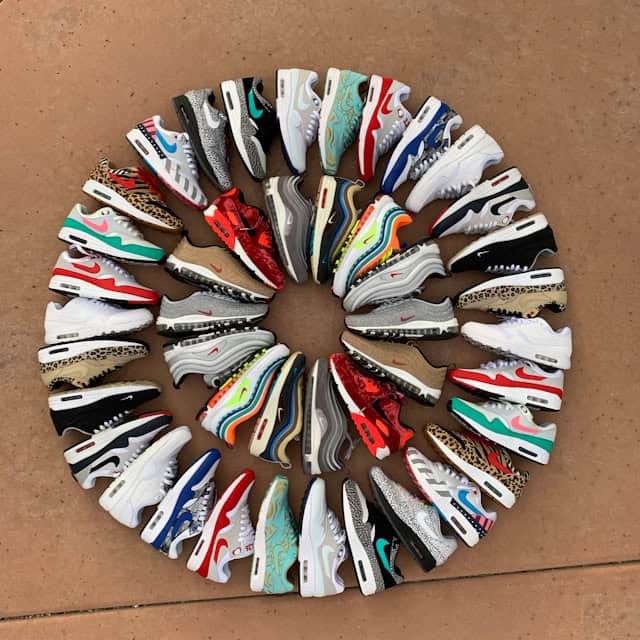
Also, keep a few different shoes (different types and brands) in your weekly rotation.
There’s an excellent study by Malisoux et al. on this topic, so check out the reference section if you’re looking for the citation.
The idea behind using different running shoes is to expose the body to variable internal and external forces while calling on it to adapt.
And please be patient, as this is almost a rap 🎤.
Keep in mind running should be fun and is one of the most efficient and practical modes of exercise.
Whether you run for health or wellness, to race, or set a P.R., it’s up to you to decide.
Although you might’ve been told running is bad for your joints, research shows it does not lead to hip and knee arthritis.
If you run on roads, remember to run against traffic or stay on the opposite side relative to cyclists.
If you run regularly, chances are, at some point, you’ll likely deal with running-related pain or injury.
As my daughter likes to say in such instances, “Dad, I think you need to run more gingerly.”
And remember never to panic or incessantly worry about whether or not you’ll run again.
If you need any help, I happen to know a trusted running clinician 😉
Lastly, remember most runners don’t have unrealistic goals so much as unrealistic timelines.
If you have any questions about program design, please know I’m here to help. Contact me anytime.
Wishing you healthy, happy, and consistent training.
References:
- Aagaard P, Andersen JL. Effects of strength training on endurance capacity in top-level endurance athletes. Scand J Med Sci Sports. 2010 Oct;20 Suppl 2:39-47.
- Alentorn-Geli E, Samuelsson K, Musahl V, Green CL, Bhandari M, Karlsson J. The Association of Recreational and Competitive Running With Hip and Knee Osteoarthritis: A Systematic Review and Meta-analysis. J Orthop Sports Phys Ther. 2017 Jun;47(6):373-390.
- Baar K. Stress Relaxation and Targeted Nutrition to Treat Patellar Tendinopathy. Int J Sport Nutr Exerc Metab. 2019 Jul 1;29(4):453–457.
- Bass SL, Saxon L, Daly RM, Turner CH, Robling AG, Seeman E, Stuckey S. The effect of mechanical loading on the size and shape of bone in pre-, peri-, and postpubertal girls: a study in tennis players. J Bone Miner Res. 2002 Dec;17(12):2274-80.
- Beattie K, Carson BP, Lyons M, Rossiter A, Kenny IC. The Effect of Strength Training on Performance Indicators in Distance Runners. J Strength Cond Res. 2017 Jan;31(1):9-23.
- Blagrove RC, Howatson G, Hayes PR. Effects of Strength Training on the Physiological Determinants of Middle- and Long-Distance Running Performance: A Systematic Review. Sports Med. 2018 May;48(5):1117-1149.
- Buist I, Bredeweg SW, Lemmink KA, van Mechelen W, Diercks RL. Predictors of running-related injuries in novice runners enrolled in a systematic training program: a prospective cohort study. Am J Sports Med. 2010 Feb;38(2):273-80.
- Cleather D, John D. The Little Black Book of Training Wisdom: How to train to improve at any sport. 2018.
- Devita P, Fellin RE, Seay JF, Ip E, Stavro N, Messier SP. The Relationships between Age and Running Biomechanics. Med Sci Sports Exerc. 2016 Jan;48(1):98-106.
- Dorn TW, Schache AG, Pandy MG. Muscular strategy shift in human running: dependence of running speed on hip and ankle muscle performance. J Exp Biol. 2012 Jun 1;215(Pt 11):1944-56.
- Eihara Y, Takao K, Sugiyama T, Maeo S, Terada M, Kanehisa H, Isaka T. Heavy Resistance Training Versus Plyometric Training for Improving Running Economy and Running Time Trial Performance: A Systematic Review and Meta-analysis. Sports Med Open. 2022 Nov 12;8(1):138.
- Hamner SR, Seth A, Delp SL. Muscle contributions to propulsion and support during running. J Biomech. 2010 Oct 19;43(14):2709-16.
- Hartwell MJ, Tanenbaum JE, Chiampas G, Terry MA, Tjong VK. Does Running Increase the Risk of Hip and Knee Arthritis? A Survey of 3804 Marathon Runners. Sports Health. 2023 Aug.
- Lambrianides Y, Epro G, Arampatzis A, Karamanidis K. Evidence of different sensitivity of muscle and tendon to mechano-metabolic stimuli. Scand J Med Sci Sports. 2024 May;34(5)
- Llanos-Lagos C, Ramirez-Campillo R, Moran J, Sáez de Villarreal E. Effect of Strength Training Programs in Middle- and Long-Distance Runners’ Economy at Different Running Speeds: A Systematic Review with Meta-analysis. Sports Med. 2024 Apr;54(4):895-932.
- Steve Magness Blog | Science of Running – click HERE
- Malisoux L, Ramesh J, Mann R, Seil R, Urhausen A, Theisen D. Can parallel use of different running shoes decrease running-related injury risk? Scand J Med Sci Sports. 2015 Feb;25(1):110-5.
- Manal K, Roberts DP, Buchanan TS. Optimal pennation angle of the primary ankle plantar and dorsiflexors: variations with sex, contraction intensity, and limb. J Appl Biomech. 2006 Nov;22(4):255-63.
- Noehren B, Snyder-Mackler L. Who’s Afraid of the Big Bad Wolf? Open-Chain Exercises After Anterior Cruciate Ligament Reconstruction. J Orthop Sports Phys Ther. 2020 Sep;50(9):473-475.
- Palaiothodorou D, Vagenas G. Inter-arm bone mass and size asymmetries in children tennis players are maturity status specific: a 9-month study on the effects of training time across pubertal change and somatic growth. Eur J Appl Physiol. 2024 Feb 28.
- Rhim H, Kim YH, Kim MG, Jang KM, Suh SW. Magnetic Resonance Imaging Findings of Knees and Spines in Recreational Runners Who Completed 1000 Marathons. Cureus. 2019 Dec 14;11(12)
- Robling AG, Burr DB, Turner CH. Recovery periods restore mechanosensitivity to dynamically loaded bone. J Exp Biol. 2001 Oct;204(Pt 19):3389-99.
- Rubin CT, Lanyon LE. Regulation of bone formation by applied dynamic loads. J Bone Joint Surg Am. 1984 Mar;66(3):397-402.
- Warden SJ, Edwards WB, Willy RW. Optimal Load for Managing Low-Risk Tibial and Metatarsal Bone Stress Injuries in Runners: The Science Behind the Clinical Reasoning. J Orthop Sports Phys Ther. 2021 Jul;51(7):322-330.
- Willy RW, Paquette MR. The Physiology and Biomechanics of the Master Runner. Sports Med Arthrosc Rev. 2019 Mar;27(1):15-21.
